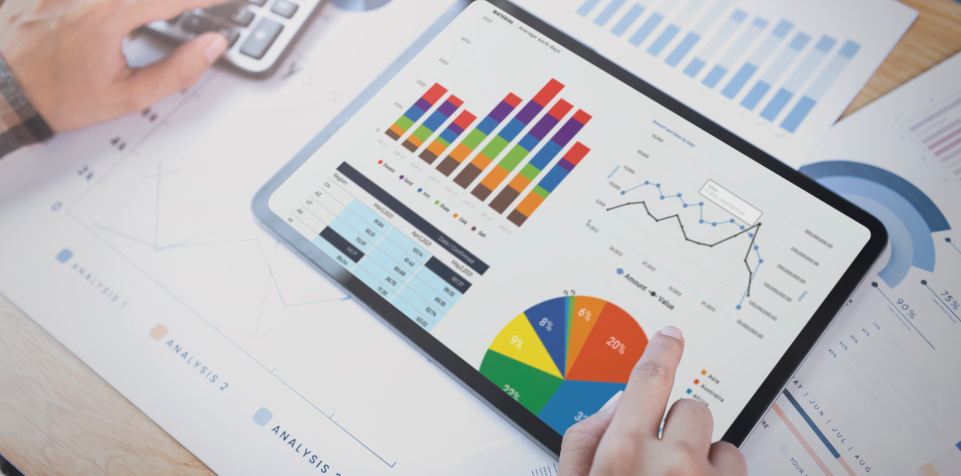
800×600
Normal
0
false
false
false
EN-GB
X-NONE
X-NONE
MicrosoftInternetExplorer4
/* Style Definitions */
table.MsoNormalTable
{mso-style-name:”Table Normal”;
mso-tstyle-rowband-size:0;
mso-tstyle-colband-size:0;
mso-style-noshow:yes;
mso-style-priority:99;
mso-style-parent:””;
mso-padding-alt:0cm 5.4pt 0cm 5.4pt;
mso-para-margin:0cm;
mso-para-margin-bottom:.0001pt;
mso-pagination:widow-orphan;
font-size:10.0pt;
font-family:”Calibri”,sans-serif;
mso-bidi-font-family:”Times New Roman”;}
As data varies from industry to industry therefore its impact on digitization differs extensively. The utilization of a data strategy that works in one business may be ineffective in another.
Digital transformation can vary from industry to industry. In its simplest sense, it is the transition of operations and resources from the physical data to the digital world. This may include developing a mobile app, website, and system for reshaping or digitally supporting a complete industry.
When we talk about Data-Driven Digitalization, it refers to digital empowerment and optimization in a business. It is for creating value via improved knowledge, integration, and properly implementing digital and offline data. Statista reveals around 89% of all companies have already adopted a Digital transformation strategy, and many more are planning to do so.
Furthermore, Statista expects global spending on digital transformation to cross the $3.4 trillion mark by 2026. This puts massive pressure on global businesses to implement and leverage digitalization big-time soon.
Role of Data in Business
Data is the heart of modern business operations and essential for decision-making and unraveling trends. It varies from industry to industry, and its impact on digitalization is different. Data is important for offering valuable insights into customer behavior.
In a modern digital world, the capability to gather and analyze data properly can set a company apart from its competitors. Traditional ways of data handling can lead to bottlenecks, inaccuracies, and missed important opportunities. Businesses face the challenge of managing huge amounts of data, which requires the use of sophisticated approaches to data handling.
Impacts of data in digitalization in various industries
Numerous global industries use data differently during their digitalization process.
Manufacturing
In the manufacturing industry, digitalization is affected by equipment and operational data. They use data to make investment decisions and utilize tools like robotic process automation.
Retail
In the retail industry, businesses depend on customer data during digitalization. In a digital transformation, they need a wide range of databases of purchasing histories and shopping to make trends their strategies.
Healthcare
In the healthcare industry, patient data impacts digitalization. When companies are aware of how individuals react to drugs; and make payments, they can automate digital tools such as their coding and billing systems.
Consumer electronics
Data on customer demand impacts digitalization efforts in the consumer electronics industry. Data point that the technology is responsible for 2%-3% of greenhouse gas emissions, they can shift toward sustainable practices. These valuable insights can drive modernization in an oversaturated field.
Finance
Economic and client data affect digitalization in the finance industry. Financial businesses trust to optimize cost-reduction efforts and decide where to invest during their digital transformation.
Data-driven Digitalization- Benefits
Data is essential for digitalization, and there are enormous degrees to which industries can control it successfully.
If they properly clean, transform, and classify the information they collect, they will surely achieve success during their digital transformation.
Most organizations are aware of the key benefits of these strategies, but few implement them. Respondents estimated that half of their data goes unutilized. All these obstacles artificially lengthen and complicate digitalization efforts.
Besides, industries can see substantial gains if they systematically utilize data, as it can facilitate their organized operations and provide meaningful insights.
Statistics that prove the importance of data visualization
The representation of data with graphics, including charts, plots, infographics, and animations, is done in Data Visualization. These graphics display complex data relationships and data-driven insights in a manner that is easy to understand.
Data visualization is used for diverse purposes, and it is highly essential to note that it is not only for data teams. Management can also take advantage of it to transmit organizational structure and make a chain while data analysts. Besides, data scientists use it in their discoveries and to explain the latest trends.
To make data easily accessible and understandable, data visualization is the go-to tool for numerous businesses to analyze and share relevant information.
According to a Fortune Business Insights report, the data visualization market in 2019 was estimated at $8.85 billion. By the year 2027, the market worth is expected to be $19.20 billion at a compound annual growth rate of 10.2%.
What’s next in Data-Driven Decision?
Data-driven decision-making is the process in which data is used to inform decisions. In this process, collecting, analyzing, and interpreting of data is done to identify the latest trends and patterns and make better decisions.
It is becoming important in all businesses, but it is highly demanded in digital transformation. Digital transformation utilizes digital technologies to enhance business processes and client experiences. Data-driven decision-making helps industries make enhanced decisions about the use of digital technologies.
Conclusion: Speed up your digital transformation in your organization and become a Digital Enterprise. Combine the real and digital worlds with data-driven digitalization to understand the use of the generated data accurately. The huge amount of data facilitates to use of the resources proficiently and drives flexibility in the industry.







